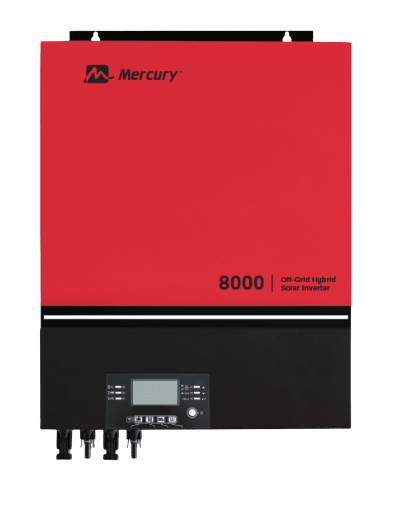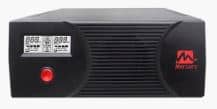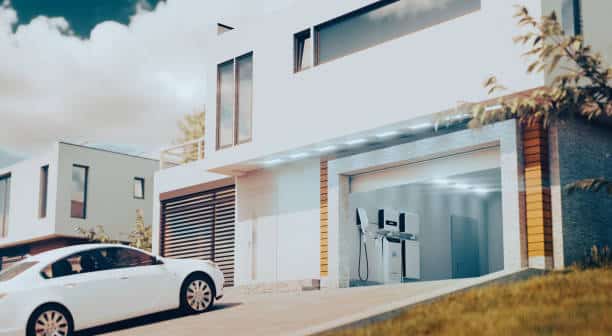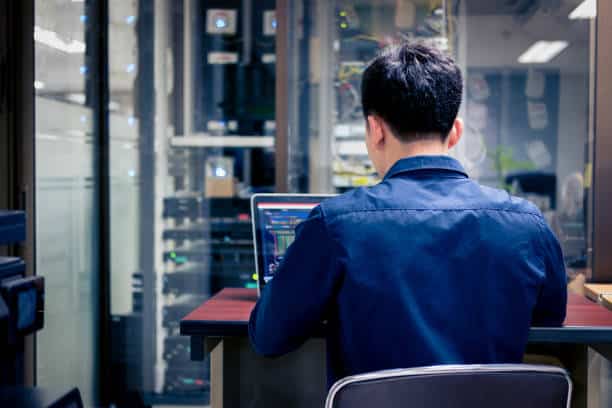Powering Up: A Guide to Inverters

The Importance and Evolution of Inverters: A Comprehensive Overview
Introduction
Inverters are electronic devices that help convert DC (Direct Current) power into AC (Alternating Current) power, making it possible to utilize electronic devices and appliances while on the go, or in areas where there is no access to reliable electricity. The use of dc to ac inverters has become increasingly important in modern society as it helps address one of the most significant challenges facing humanity - the need for a sustainable, reliable, and affordable power supply source.
Definition of an Inverter
An inverter is an electrical device that helps convert DC power into AC power, allowing you to use electronic devices and appliances when there is no regular electrical supply. It works by using electronic switches that turn on and off at high frequencies, thus creating a simulated AC signal. By regulating this frequency, voltage level, and waveform shape, an inverter can produce a stable output comparable to what we would get from conventional household outlets.
Brief History of Inverters
The invention of a rotary converter that converted direct current to alternating current in the 1800s paved the way for inverters. However, it wasn't until World War II that inverters became popular as soldiers needed portable sources of electricity while out on duty. Since then, research has gone into creating more efficient and cost-effective models suitable for both commercial applications as well as residential use.
The Importance of Inverters in Modern Society
In recent times, inverters have become increasingly important due to their ability to provide an efficient backup system for households during blackouts or natural disasters. They have also found extensive use in remote areas where there is no access to a regular source of electricity but require powering up medical equipment or other essential electrical devices.
Inverters have also contributed immensely to the development of renewable energy sources, such as solar and wind power, which rely on DC power supply systems. With the growing demand for sustainable and eco-friendly energy solutions worldwide, inverters are bound to play an even more significant role in shaping our future energy needs.
Types of Inverters
There are three main types of inverters: pure sine wave, modified sine wave, and square wave. Each type of inverter has its own unique characteristics, advantages, and disadvantages. Understanding the differences between these three types is crucial in choosing the right inverter for a specific application.
Pure Sine Wave Inverter

A pure sine wave inverter produces a smooth and clean waveform that closely resembles the AC power that comes out of a wall socket. It is considered to be the highest quality and most efficient type of inverter available on the market. Pure sine wave inverters are ideal for sensitive electronic devices such as laptops, TVs, and medical equipment because they deliver a clean electrical signal without any interference or noise.
One significant advantage of pure sinewave inverters is their ability to run at full capacity continuously without overheating or causing damage to connected devices. However, they tend to be more expensive than other types of inverters because they require complex circuitry to produce a perfect sinusoidal waveform.
Modified Sine Wave Inverter

Modified sine wave inverters are much more affordable than pure sine wave inverters but produce an output waveform that is not as clean as pure sine waves. The output waveform usually consists of stepped approximations which can cause interference with certain electronic devices such as audio equipment or medical machines.
One advantage of modified sine wave inverters is their relative affordability compared to pure sine wave models, making them suitable for less demanding applications where cost is a major factor. Modified sine waves are also compatible with most household appliances like refrigerators and air conditioners.
Square Wave Inverter
Square wave inverters are the simplest type among all three types and produce an output waveform that resembles a square-shaped pulse instead of sinusoidal waves like those produced by pure or modified sine waves. Square wave inverters are the most basic and inexpensive type of inverter, suitable for powering simple devices like lights, fans, or pumps. One major disadvantage of square wave inverters is that they produce a lot of harmonic noise and electromagnetic pollution which can cause interference with other electronic devices that are sensitive to such noise.
They are also not suitable for use with many types of modern electronic equipment due to their low-quality waveform. The type of inverter to be used depends largely on the application and budget involved.
Pure sine wave inverters should be chosen when high-quality electricity is needed for sensitive electronics, while modified sine wave inverters can be used for less sensitive electronics at a more affordable price. Square wave inverters should only be used when there is no need for high-quality electrical output or when cost is a major factor.
Applications of Inverters
Residential Applications

In modern society, inverters have become an essential component of any household. One of the primary residential applications of inverters is for power backup systems. During power outages, an inverter converts DC power stored in batteries into AC power supply that can be used to operate household appliances like lights, fans, and computers.
Inverters eliminate the need for noisy generators and offer a cost-effective alternative. Another residential application of inverters is solar energy systems.
Solar panels harness sunlight and convert it into DC electricity that is then fed to an inverter for conversion into usable AC electricity. This type of inverter system allows households to save on energy bills while reducing their carbon footprint by producing eco-friendly energy.
Inverters are used in home appliances such as refrigerators and air conditioners. They provide a stable source of AC power supply that ensures efficient operation without damaging the appliance's motor or circuits.
Commercial Applications

Inverters have several commercial applications across various industries. One such application is in industrial machinery and equipment where they are used to control the speed or torque of motors, pumps, compressors, conveyors and other mechanical systems. Inverters offer precise control over these machines resulting in increased efficiency while saving energy.
Another key commercial application is telecommunications equipment where they are used as backup power sources to ensure continued operations during blackouts or when grid power fails. Telecommunication companies often use solar inverters for powering cell towers located in remote areas where connecting to grid-based electricity can be challenging.
In medical facilities such as hospitals and clinics, reliable backup power sources are vital for emergency situations which makes inverters a crucial component installed alongside generators for uninterrupted patient care even during extended blackouts. Overall, the versatility of applications offered by inverters has made them indispensable both domestically and commercially across a wide range of industries.
How an Inverter Works
Inverters are electronic devices that convert DC (Direct Current) power supply to AC (Alternating Current) power supply. This conversion process enables the utilization of DC power sources like batteries and solar panels to operate AC-based appliances, machines, and electronics. The process involves changing the input power supply from a fixed voltage level to a variable voltage and frequency AC output.
Conversion process from DC to AC power supply
To convert DC to AC, the inverter works in three stages: 1) Rectification stage where the incoming DC voltage is converted into a high-frequency square wave by controlling the flow of electrical energy through transistors.
2) Filtering stage where capacitors are used to smooth out any irregularities in the square wave signal. 3) Inversion stage where transformers or other similar components are used to convert the filtered square wave into an AC sine wave.
Components that make up the inverter system
The basic components of an inverter include a DC input source, transistors, capacitors, transformers or transformerless circuitry depending on whether the device is a pure sine wave inverter or not. The input section comprises a battery bank or solar panel array that provides low-voltage direct current (DC).
The output section consists of capacitors for filtering noise and ensuring stable voltage levels and transformers for converting low-voltage signals into high voltage ones. The control section is made up of microprocessors or programmable logic controllers which monitor and regulate various parameters such as frequency, voltage levels, phase angle adjustment for improved efficiency and safety features.
Control mechanisms and safety features
Control mechanisms are essential components of inverters as they help regulate various parameters such as current flow rates, temperature control systems, overload protection circuits, voltage regulation functions amongst others. These features ensure that the inverter operates safely and efficiently. Safety features of an inverter include short-circuit protection, over-voltage protection, under-voltage protection, overheat protection, and surge suppression circuits.
These features protect the inverter from damage caused by excessive current flow and voltage fluctuations thereby increasing the life span of the device. Inverters play a critical role in modern society as they provide an efficient means of converting DC power sources to AC.
The conversion process relies on sophisticated control mechanisms and safety features to ensure safe and reliable operation. Understanding how inverters work will enable users to select suitable models for various applications while avoiding potential safety hazards associated with improper use of these devices.
Advantages and Disadvantages of Using an Inverter System
The Advantages of Inverter Systems
Inverter systems have become increasingly popular in recent years for a number of reasons. One of the main advantages of using an inverter system is that it provides a cost-effective power source alternative to generators.
This is particularly crucial for those living in areas prone to power outages, or those who require a reliable energy source while travelling or camping. In comparison, traditional generators can be expensive to run, noisy and produce harmful emissions that may impact the environment.
Another benefit of using an inverter system is its low noise pollution compared to generators. This makes it ideal for use in residential areas where excessive noise levels may be disruptive or bothersome to neighbours.
Additionally, inverters are highly energy-efficient and eco-friendly compared to traditional alternatives like gas-powered generators. This means they are less likely to harm the environment, which is important for those who prioritize sustainability and eco-friendliness.
The Disadvantages of Inverter Systems
Although there are numerous benefits associated with using an inverter system, there are also some potential drawbacks that consumers should bear in mind when making purchasing decisions. One significant disadvantage is the limited power output capacity offered by these systems.
While sufficient for powering small appliances like phones or laptops, more energy-intensive devices such as air conditioners may require greater outputs than most inverters can provide. Another downside to using an inverter system is its dependence on battery lifespan.
All inverters rely on batteries as their primary power source, meaning users must ensure their batteries remain sufficiently charged at all times if they wish to maintain consistent power supply levels. This can be challenging when relying on solar panels or other alternative charging sources since weather conditions may impact charging rates significantly.
Despite these potential drawbacks, inverters remain one of the most cost-effective and energy-efficient alternatives to traditional generators. By weighing the pros and cons associated with inverter systems, consumers can make more informed purchasing decisions that better reflect their needs and expectations.
Future Developments in the Field of Inverters
Improvement in Efficiency Levels
Inverter technology is continually evolving, and manufacturers are exploring ways to increase efficiency levels. Currently, inverters convert DC power from batteries into AC power at an efficiency rate of between 70% and 95%. However, research is underway to improve this conversion process by reducing energy losses due to switching losses, harmonic distortion, and voltage drops.
These improvements can lead to more energy-efficient systems that require less battery capacity and ultimately reduce costs. Another way manufacturers are improving inverter efficiency is through the use of advanced semiconductor technologies like silicon carbide (SiC) and gallium nitride (GaN).
These materials have higher conductivity levels than traditional silicon-based transistors used in most inverters today. The use of these materials can reduce switching losses and improve efficiency overall.
Development of Advanced Control Mechanisms
As more renewable energy sources become available, it's becoming increasingly important for inverters to be able to handle variable power inputs. Advanced control mechanisms like Maximum Power Point Tracking (MPPT) are already used on some solar inverters to optimize the conversion process according to changing light conditions. However, future developments may see a combination of MPPT algorithms with machine learning techniques that can learn from previous data patterns and make better predictions about how much power will be available at any given time.
Another area where advanced control mechanisms may play a role is the integration of multiple sources into one system. For example, an inverter system that integrates solar panels, wind turbines, and batteries would need sophisticated control algorithms that can manage power flows across different sources seamlessly.
Conclusion
As technology continues its rapid evolution towards renewable energy solutions, it's crucial for developers to focus on developing more efficient and intelligent systems like inverters. Future developments such as advanced control mechanisms and increased efficiency levels will be essential to the continued growth of renewable energy systems and the reduction of greenhouse gas emissions. With these improvements, inverters can become more reliable, cost-effective, and environmentally friendly while powering homes, businesses, and industries around the world.
12v Inverters
24 volt inverters
48 volt inverters

3 thoughts on “Powering Up: A Guide to Inverters”